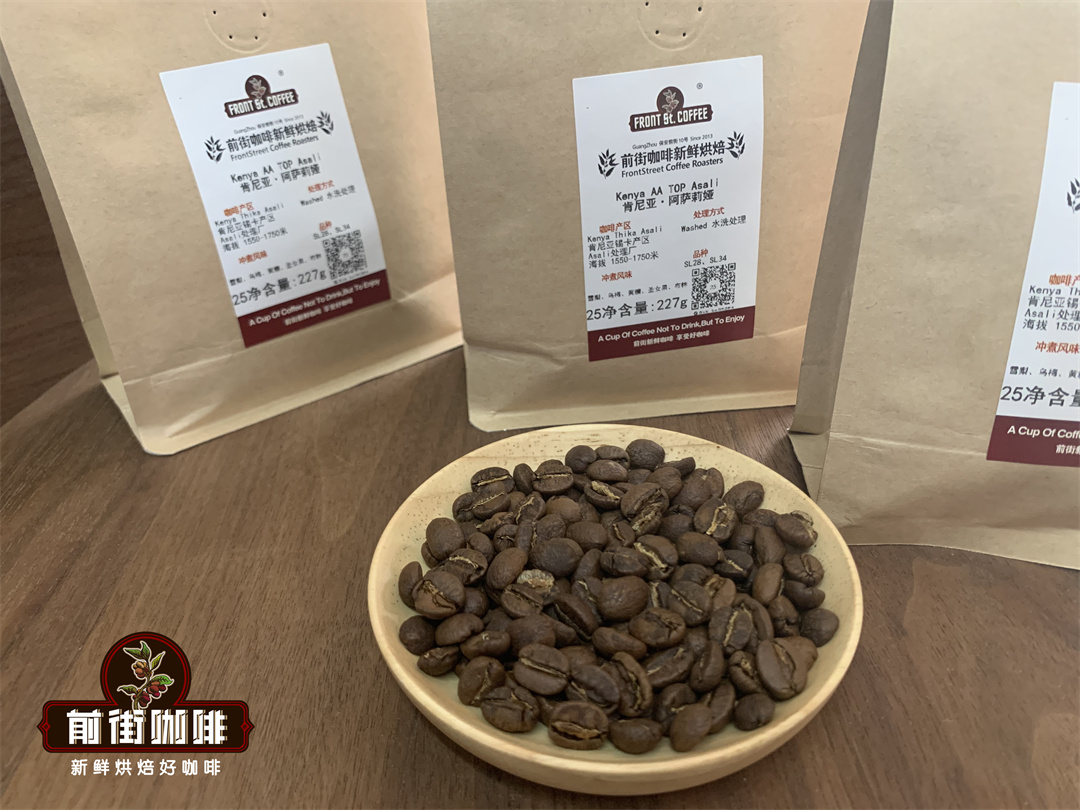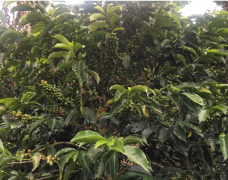Is the coffee rich in fruit and sour Kenyan coffee?
Kenyan coffee beans, usually with a wonderful fruit flavor, taste with a BlackBerry and grapefruit flavor, or citric acid sweet, aromatic, rich, fruity aroma. But apart from fruit tonality, Kenyan acid is its own essence. Speaking of Kenya, although it is adjacent to Ethiopia, which is rich in coffee beans and belongs to the African continent, Kenyan coffee beans have little to do with Ethiopia.
Today's Kenyan coffee beans are basically bourbon coffee introduced from Brazil and did not begin to be cultivated in large quantities until the early 20th century. So, strictly speaking, Kenyan coffee beans, though grown on the African continent, are of Brazilian descent. However, Kenya and Brazil are too different in terms of geographical environment, climatic conditions and so on. The Kenyan mountains are basically at an altitude of 1200 meters to 2000 meters above sea level. Friends who know about coffee must know that this altitude is really high, which is very suitable for the growth of coffee trees, and because of the lower temperature and slow growth in the mountain areas, the aromatic components of coffee beans have been fully developed, with more obvious acidity and harder texture.
Therefore, compared with the original Brazilian beans, the taste of Kenyan beans is very different. In addition, Kenya was once a British colony. With the high level of industrialization at that time, the British established a set of perfect cultivation and quality management system here, and it is still in use today. Until now, many small coffee farmers in Kenya have sent their picked fruits to cooperative farms for unified processing, and the whole process is very rigorous under the supervision of the official Coffee Administration. Therefore, Kenyan coffee beans are also world famous for their guaranteed quality.
The magical variety of coffee in Kenya
Kenya's unique coffee is inseparable from its unique coffee tree species. The origin of coffee in Kenya was first cultivated in the 19th century. In the 19th century, missionaries introduced Arabica trees from Yemen, but did not plant them in large quantities, until 1893, when Brazil's ancient bourbon seeds were introduced.
In the 1950s, through unremitting efforts, the then agricultural research institution ScottLaboratory selected two excellent hybrids, SL-28 and SL-34, and the unique coffee flavor combined with Kenya's unique high-phosphate soil, subverted the long-standing prejudice of artificial breeding without excellent natural varieties, and established a perfect reputation in the coffee industry.
In addition, the Kent species, ruiru11 species, Batian species or K7 species in Kenya are all coffee trees currently grown in Kenya. In Kenya, there are two harvest seasons, the main harvest season is from October to December and the secondary harvest season is from May to July.
Handling method:
Kenyan cooperative farm, carries on the unified processing treatment way, generally uses the water washing.
The unique flavor of Kenyan coffee is also closely related to the exquisite coffee washing method. Generally speaking, the water washing and fermentation time of Central and South American coffee beans does not exceed 36 hours, but the Kenyan water washing time is as long as 72 hours. After 48 hours of fermentation, the surface pectin is removed, and then after 24 hours of clean water immersion treatment. Kenya's unique water washing technology is called "Kenyan double fermentation" or "double soaking" washing method. This extra fermentation process provides an amazing taste for the coffee, which is bright and clean.
Grading:
Coffee can be graded in many ways, while Kenyan coffee is graded according to size, but Kenya is also one of the few countries to pick out round beans and sell them.
Kenyan beans are graded according to the size, shape and hardness of the beans. From good to second, it is divided into PB (highest level), AA++, AA+, AA, AB (lowest level).

Important Notice :
前街咖啡 FrontStreet Coffee has moved to new addredd:
FrontStreet Coffee Address: 315,Donghua East Road,GuangZhou
Tel:020 38364473
- Prev

Colombian Coffee Variety-Cattulachi Rosso you've never heard of!
When it comes to Colombian coffee, I believe there are already branches of coffee beans in your mind, such as Flower Moon Night, Rose Valley, cherry blossoms, San Jose, and so on. Some time ago, a unique Colombian coffee variety became popular for its unique floral aroma and lemon acidity, which may be a little strange to everyone, but this is still new to us.
- Next

What is Colombian Coffee? the grading of Colombian boutique coffee
Colombian coffee beans, which have long been well known in Japan, are large coffee beans with rich sour and rich flavors, with dry Himalayan fir and stick fruit aromas. Colombia is currently the third largest coffee producer in the world, after Brazil and Vietnam. The Colombian coffee produced has exquisite quality, soft taste and unique flavor.
Related
- Beginners will see the "Coffee pull flower" guide!
- What is the difference between ice blog purified milk and ordinary milk coffee?
- Why is the Philippines the largest producer of crops in Liberia?
- For coffee extraction, should the fine powder be retained?
- How does extracted espresso fill pressed powder? How much strength does it take to press the powder?
- How to make jasmine cold extract coffee? Is the jasmine + latte good?
- Will this little toy really make the coffee taste better? How does Lily Drip affect coffee extraction?
- Will the action of slapping the filter cup also affect coffee extraction?
- What's the difference between powder-to-water ratio and powder-to-liquid ratio?
- What is the Ethiopian local species? What does it have to do with Heirloom native species?

